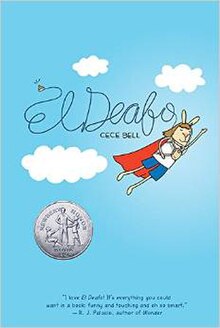
1. BIBLIOGRAPHY
Krosoczka, Jarrett J. Lunch Lady and the Bake Sale Bandit. New York: Random House Children’s Book, 2010. ISBN 978-0-375-86729-3
2. PLOT SUMMARY
The Lunch Lady is an adventurous, crime chasing hero who works behind the scenes alongside a brave bunch of students named the Breakfast Bunch to save the day when someone steals all the baked goods for the bake sale she has organized to raise money for the school, in order to pay for a fieldtrip to the museum.
3. CRITICAL ANALYSIS
The simple plot of the Breakfast Bunch helping the Lunch Lady find out what happened to the stolen goodies for the bake sale takes readers through the adventures of three students, Dee, Hector and Terrence, your typical middle school students dealing with a crazy bus driver, grumpy teachers and a know-it-all, hall monitor. Young adults will relate to this fun story through the mere thought of "what if?" Why can't a lunch lady have an alter ego that helps her fight crimes with the help of some savvy middle school students? What if they were those students? The storyline is definitely something that could happen in real life, especially through the eyes of a child, with some fantasy in the form of "BUSZILLA", the crazy bus driver's bus that comes to life in the form of a dinosaur.
Lunch Lady and the Bake Sale Bandit is a graphic novel that is told entirely through the characters' dialogue, providing readers with vivid and fun, black, white and yellow illustrations that help in telling the story. The main setting is the school, where a lot of excitement happens, but the school bus yard plays a big part in the story, since that is where the thief is found and the climax of the Lunch Lady and BUSZILLA battling it out and saving the kids takes place.
3. REVIEW EXCERPT(S)
From School Library Journal: “The story packs goofy humor and lots of action into a familiar setting, and simple panels and layouts make it easy to follow.”
From Kirkus Review: “A delightfully fun escapist read. Be sure to recommend this to fans of Captain Underpants."
From Booklist: "A know-it-all fellow student, a crusading health teacher, and a maniacal bus driver are among Krosoczka's funny and over-the-top red herrings. The high action of the yellow-washed, black-and-white cartoon panels is echoed in the narrative's pacing. The end clearly sets up the gang's next adventure."
4. CONNECTIONS
Gather other Lunch Lady series books to read such as:
• Lunch Lady and the Author Visit Vendetta. ISBN-10 0375860940
• Lunch Lady and the Summer Camp Shakedown. ISBN-10 0375860959
Gather other Jennifer Holm books to read such as:
• It's Tough to Lose Your Balloon. ISBN-10 0385754795
• Punk Farm. ISBN-10 0440417937
• Platypus Police Squad: The Frog Who Croaked. ISBN-10 0062071645


